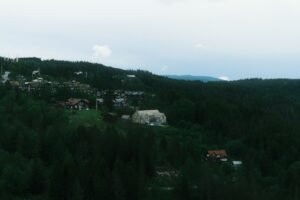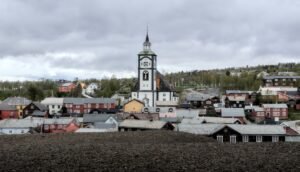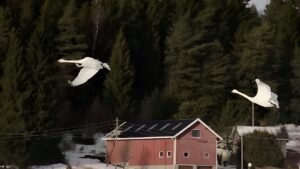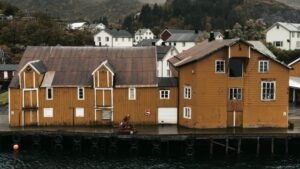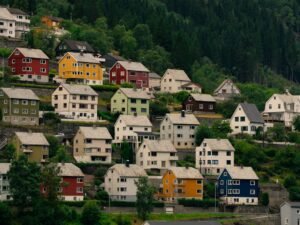
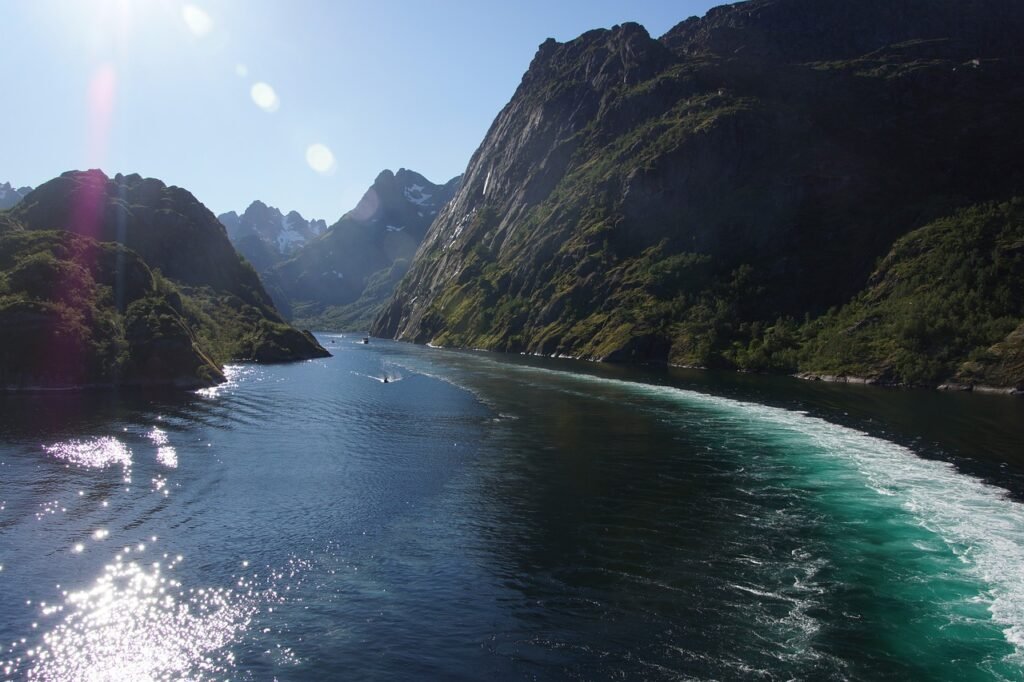
Language for Outdoor Adventures: How to Describe the Beauty of Nature in Norwegian
Norway is world-famous for its stunning natural landscapes, from towering mountains and serene fjords to vast forests and the magical Northern Lights. For outdoor enthusiasts, exploring Norway’s nature is more than just a visual delight; it’s a rejuvenating experience for the soul. Learning Norwegian vocabulary related to nature and outdoor activities not only helps you better connect with the local culture but also enriches your outdoor experiences.
In this article, we’ll introduce you to key Norwegian words and phrases to help you describe the breathtaking natural beauty you encounter during your adventures in Norway. Whether you’re a hiking enthusiast, skiing lover, or simply someone who enjoys immersing yourself in nature, these words will come in handy as you explore the great outdoors.
Table of Contents
Toggle1. Core Vocabulary for Describing Nature
Norwegian has a rich vocabulary to describe its natural wonders. Each word can vividly portray the awe-inspiring landscapes you’ll encounter. Whether you’re standing atop a mountain or gazing at a calm lake, knowing how to describe these scenes in Norwegian adds a new dimension to your experience. Below are some of the most commonly used words related to nature.
1.1 Fjell (Mountain)
Mountains are a defining feature of Norway’s landscape, and many outdoor adventures revolve around the fjell. Whether you’re hiking in Jotunheimen or admiring the snow-capped peaks of Rondane, mountains are at the heart of Norway’s natural beauty.
Example Sentence:
- Fjellet er dekket av snø hele året.
(The mountain is covered in snow all year round.)
1.2 Fjord (Fjord)
Norway’s fjords are world-renowned, and the word fjord is not only a staple in Norwegian but also widely recognized in many languages. Norway’s fjords, particularly Sognefjord and Geirangerfjord, are celebrated for their breathtaking beauty, deep waters, and towering cliffs.
Example Sentence:
- Fjorden er så dyp at man ikke kan se bunnen.
(The fjord is so deep that you can’t see the bottom.)
1.3 Skog (Forest)
Norway is home to vast forests, and skog refers to these quiet, mysterious woodlands. Forests are ideal for hiking and offer a serene escape into nature. Norwegians deeply value their connection to the outdoors, often referred to as friluftsliv (outdoor life), and forests are a significant part of that lifestyle.
Example Sentence:
- Vi gikk gjennom skogen og hørte fuglene synge.
(We walked through the forest and heard the birds singing.)
1.4 Innsjø (Lake)
With thousands of lakes scattered across the country, innsjø refers to these pristine freshwater bodies. Lakes in Norway are popular spots for fishing, boating, and swimming in summer, while in winter, they transform into skating rinks.
Example Sentence:
- Innsjøen speiler fjellene rundt seg.
(The lake reflects the mountains around it.)
1.5 Isbre (Glacier)
Norway’s glaciers, especially Jostedalsbreen—the largest glacier on mainland Europe—are natural wonders. The word isbre refers to glaciers, and glacier hiking is a popular adventure activity in Norway.
Example Sentence:
- Isbreen beveger seg sakte, men konstant.
(The glacier moves slowly but constantly.)
1.6 Nordlys (Northern Lights)
The Northern Lights, known as nordlys in Norwegian, are one of nature’s most mesmerizing phenomena. In northern Norway, especially around Tromsø, the winter skies are often illuminated by these celestial lights, making it a bucket-list experience for many visitors.
Example Sentence:
- Vi håper å se nordlys når vi reiser til Tromsø.
(We hope to see the Northern Lights when we travel to Tromsø.)
2. Vocabulary for Outdoor Activities
Exploring Norway’s nature goes beyond admiring the scenery. Many outdoor activities await, from hiking and skiing to fishing and kayaking. Here are some commonly used words related to these outdoor adventures, which will help you better understand and participate in the activities.
2.1 Tur (Hike/Trip)
In Norway, the phrase gå på tur is very common, meaning to go on a walk or hike. Whether it’s a simple forest stroll or a more challenging mountain hike, Norwegians cherish their connection to nature through tur.
Example Sentence:
- Vi skal gå en tur til Preikestolen i morgen.
(We’re going for a hike to Preikestolen tomorrow.)
2.2 Sti (Trail/Path)
The word sti refers to a trail or path often used for hiking. In Norway’s mountains and forests, many trails are well-marked, guiding adventurers through some of the country’s most scenic landscapes.
Example Sentence:
- Følg stien for å komme til toppen.
(Follow the trail to reach the top.)
2.3 Ski (Ski)
Winter in Norway offers endless opportunities for skiing, and the word ski covers all types of skiing, including downhill and cross-country. Popular ski resorts like Trysil and Hemsedal attract skiers from around the world.
Example Sentence:
- Vi skal gå på ski i Hemsedal til helgen.
(We’re going skiing in Hemsedal this weekend.)
2.4 Fiske (Fishing)
Fishing is one of the most beloved outdoor activities in Norway, and fiske refers to various forms of fishing. Whether along the coast or in lakes and rivers, fishing is a cherished pastime for Norwegians.
Example Sentence:
- Fisking i Norge er en populær aktivitet både om sommeren og vinteren.
(Fishing in Norway is a popular activity both in summer and winter.)
2.5 Kajakk (Kayak)
Kayaking in Norway’s fjords is a must-do for many visitors, and the word kajakk refers to the small boats used for paddling through the water. It’s an incredible way to experience the fjords and surrounding landscapes up close.
Example Sentence:
- Vi skal padle kajakk i Geirangerfjorden.
(We’re going kayaking in Geirangerfjord.)
3. Seasons and Nature in Norway
Norway’s nature changes dramatically with the seasons, and each brings its own unique beauty and activities. Understanding the Norwegian words for the seasons and what each season offers can deepen your appreciation of the country’s diverse landscapes.
3.1 Sommer (Summer)
Summer in Norway is short but spectacular. The word sommer refers to this highly anticipated season when daylight stretches long into the evening, making it the perfect time for hiking, camping, and swimming.
Example Sentence:
- Om sommeren kan man gå turer i fjellet hele dagen.
(In the summer, you can hike in the mountains all day.)
3.2 Vinter (Winter)
Winter is Norway’s most defining season, particularly in the northern regions. Vinter means snow-covered landscapes, perfect for skiing, skating, and viewing the Northern Lights.
Example Sentence:
- Vinteren er perfekt for å stå på ski og nyte naturen.
(Winter is perfect for skiing and enjoying nature.)
3.3 Høst (Autumn)
Autumn, or høst, brings vibrant colors to Norway’s forests and mountains. It’s the season when Norway’s landscapes turn into a painter’s palette, and many outdoor enthusiasts enjoy hunting and berry picking during this time.
Example Sentence:
- Høsten i Norge byr på vakre farger og frisk luft.
(Autumn in Norway offers beautiful colors and fresh air.)
3.4 Vår (Spring)
Spring, or vår, is the season of renewal. As snow melts and flowers bloom, nature awakens. It’s also an excellent time for hiking and admiring waterfalls fed by melting snow.
Example Sentence:
- Om våren smelter snøen, og naturen våkner til liv igjen.
(In spring, the snow melts, and nature comes back to life.)
4. Learning Norwegian: Enhance Your Outdoor Experience
Mastering Norwegian vocabulary related to nature and outdoor activities not only helps you communicate better but also deepens your connection with the land and its people. If you’re interested in learning these words systematically and improving your overall Norwegian skills, consider joining our Norwegian language courses in Oslo. Click here to register for a course and start your language journey today.
Our courses cater to all levels, from beginners to advanced learners. Not only will you learn the language, but you’ll also gain insight into Norwegian culture and traditions, allowing you to fully embrace the outdoor lifestyle that Norwegians cherish.
5. Conclusion
Norway’s natural beauty is famous for its majesty and diversity. Mastering the vocabulary to describe these wonders enhances your appreciation of the country’s landscapes. Whether you’re exploring mountains, fjords, forests, or lakes, knowing these Norwegian words will help you communicate effortlessly with locals and immerse yourself in the culture.
If you want to take your Norwegian skills to the next level, join our Norwegian language classes. Through structured learning, you’ll not only be able to describe the beauty of nature, but you’ll also use these words during actual outdoor activities. Click here to register and let language elevate your outdoor adventures in Norway, embarking on an unforgettable journey through its magnificent landscapes!
If you want to learn Norwegian, you can register for classes here. We look forward to hearing from you and helping you become fluent in Norwegian.

